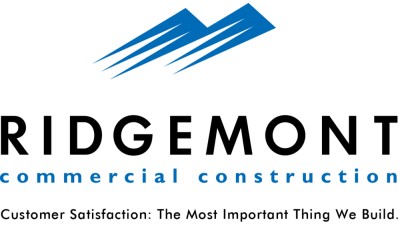Aging Population Drives Demand For Bigger, Better Senior Living Communities

Senior housing is an in-demand and dynamic product. Although senior housing returns have fallen from 20% to 13% in the past three years, the asset class still outperforms office, retail, multifamily and hospitality. This has inspired a wave of construction from new players eager to capitalize on America's growing senior housing needs.
"More design firms and developers are moving into the senior market segment," Ridgemont Commercial Construction Director of Healthcare and Senior Living Rich Piersee said. "In the past, new construction was driven by bigger healthcare REITs and end users."
Piersee has over 25 years of experience working on senior housing projects throughout the U.S. Single-home prices continue to trend upward and reach all-time highs, pricing some seniors out of the market. At the same time, 10,000 baby boomers are retiring each day in the U.S. These two market fundamentals point to a strong outlook for senior housing.
"We have several years before this market maxes out in the late 2020s to early 2030," Piersee said. "As an industry, we need to figure out how to provide enough affordable housing for seniors."
The type and scale of senior living communities are changing to meet the needs of a younger, more social demographic. According to Piersee, 10 years ago developments mainly fell between $3M and $5M. Today, most are much larger, between $20M and $25M, and are more lifestyle-oriented and amenity-rich. Exemplifying this is Ridgemont's Ella Springs community. Ridgemont recently broke ground on Phase 2, a $29.8M, 156K SF development. When completed, the community will total 232K SF.

"Over the last few years we've seen campus-type projects that in the past existed primarily on the nonprofit side," Piersee said. "Most are incorporating an independent living aspect because people are staying in independent longer before entering assisted living."
This means the new senior housing product emphasizes independent living over healthcare — for now. Although it is more expensive to build to assisted living standards, savvy developers are designing the independent component such that it can easily convert to assisted living when demand shifts.
"We used to see age-restricted communities that stood alone," Piersee said. "In the past six months, around 75% of senior housing projects I've looked at are continuing care facilities."
Senior housing is underserved nationwide, and this situation could get worse as the number of people over 65 is projected to grow to 79 million by 2037. That is pushing product into new areas.
"Senior housing is re-emerging in tertiary and secondary markets around Dallas, which were pulled away from in favor of major metropolitan markets and metropolitan infill," Piersee said. “Properties are being purchased with the intent of expansion, and we are also seeing mixed-use integrating retail and restaurants on the same site.”
To learn more about this Bisnow content sponsor, click here.

